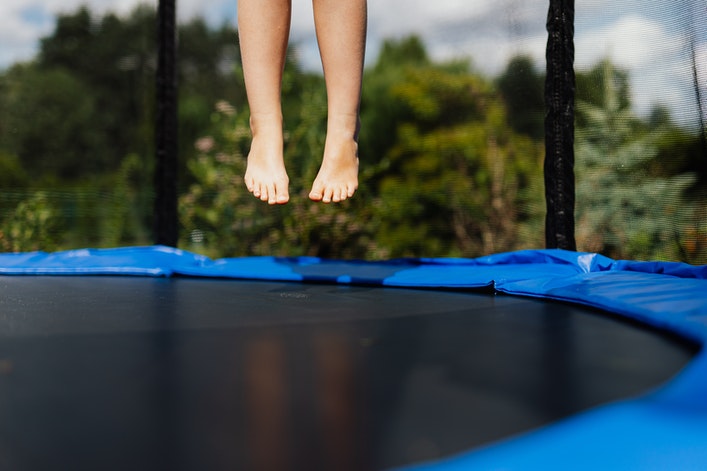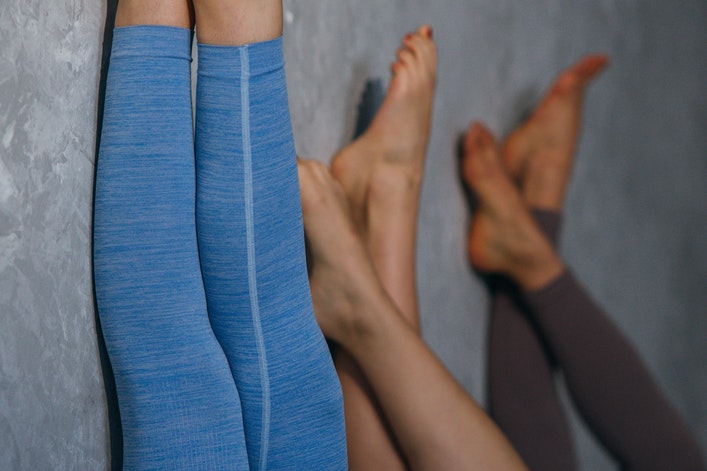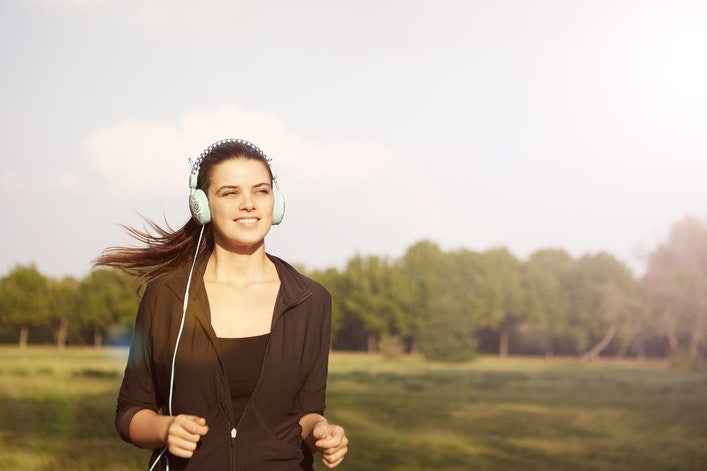Life is a constant juggle, so finding time to focus on our health can be challenging. But with lymphedema or any lymphatic disorder, our bodies constantly remind us that we need to pay attention. I am continually looking for ways to further minimize and control my lymphedema, which fortunately is well under control due to all my previous natural strategies. But ideally, I’d love to conquer it and get rid of it permanently, so I’m willing to try whatever seems to hold promise. That’s why I embarked on my red light therapy journey with the MitoPRO 1500 light panel about 140 days ago.
I was cautiously optimistic when I started. Many people rave about red light for fitness and skin, and I have personally experienced its benefits on aging skin. But would it make enough of a difference to warrant spending a thousand bucks on a full body panel?
A few months in, I’m excited to share the transformative effects I’ve experienced, despite the fact that I had to take a break from it due to travel. From newfound energy to reduced swelling and beyond, here’s how red light therapy has impacted my health.
Please note: this post may include affiliate links that earn FightLymphedema.com a small commission, at no cost to you, to offset the costs of maintaining this website and content. Thank you for supporting our efforts.
Swelling in my problem leg is undetectable(!)
The good news is that as soon as I got back to regular light treatments, my legs have no noticeable swelling. The red light panel is definitely helping with short-term symptom control. I have no sensation of liquid in the back of my left leg, which is what I usually experience, even if it isn’t too visible.
I wrote in my last update that the swelling seemed to strangely transition to my right hand. That’s still going on although it is less too. Usually, this happens only when I exercise for more than 30 minutes. Fortunately, I have found it easy to control by walking with a hiking pole.
Is the red light therapy changing my lymphatic system? I can’t say for sure yet, but things are different, which I find extremely promising. While I can’t know if this is a permanent improvement, for now, I am very pleased so far.
But the red light panel is helping me in other ways quite dramatically, too.
Way more energy
I had read about people being able to do much more physically after using red light for a period of time. Well, 140 days into my red light therapy experiment, I can say this seems to be making a huge difference. The surge in energy has been so remarkable that I’ve ramped up my workouts without really trying. I just don’t get as tired as I used to when working out.
Hiking is my preferred workout, and I do it daily, as I live near many trails, and it is something I love to do. I used to struggle to hike up 700 feet in one workout. Now I am doing double that, so about 1,400 feet. That is huge for me for a daily workout. I now literally have taken a big step forward in my fitness and am in the best shape of my life. Since I’m no spring chicken, I am thrilled with that!
Other benefits
I outlined other benefits before:
- Skin looks and feels better, and with the full-body panel, you can treat all your skin, not just your face.
- Pain relief: I’m finding those nagging aches and pains are way less.
My 63-year-old husband has also used it for a problem knee for a few days at a time, and it seems to be helping his knee feel better much faster when it gets inflamed.
Is it all a matter of the mitochondria?
How can something like a red light panel have all these benefits? I’ve outlined the science behind it in a previous article, and there is plenty of reference material out there if you hop online.
While this technology may sound far out, it is actually rooted deeply in science. There have been thousands of studies on red light, and it is now in use or being studied in many medical disciplines.
I’ve been reading (and listening to more podcasts with researcher interviews) on the role of mitochondria in our energy levels and overall health. It seems that a lot of the red light benefit derives from healthy mitochondria being crucial for many aspects of our health.
To me, that helps explain the real benefit of red light therapy, as it has been shown to activate and improve mitochondria, essentially making old cells act younger.
Are there any other ways to improve mitochondria?
While red light therapy is one way to improve our mitochondria, could there be others? And can that improve our lymphatic system?
At the same time, let’s address the elephant in the room—red light therapy panels are not cheap. If you can afford it, it is probably worth trying to see if it can improve your lymphedema and overall health. But what if the cost is not in your budget?
Fortunately, there may be other ways to improve your mitochondrial health as well. It may not be as fast, but the price is right. And for those of us who are trying to make significant changes, why not try both? The best part? It’s virtually free.
Zone 2 Training: Another way to improve your mitochondria function
Zone 2 training is a specific form of cardiovascular exercise that aims to keep your heart rate between 60 and 70 percent of its maximum. It’s often described as the range between easy and moderate cardio, where you can still hold a conversation but are clearly exerting effort.
The primary goal is to improve endurance, but researchers find its benefits extend far beyond that. According to an article in Men’s Health, Zone 2 training is instrumental in building and rejuvenating mitochondria, the cellular engines that generate energy. This form of exercise is not just for athletes; it’s beneficial for anyone looking to improve their overall health. It’s particularly effective in enhancing mitochondrial function, which has been linked to a range of health benefits, including better recovery between workouts and a more efficient metabolic system.
The training helps you produce more mitochondria and shed old, damaged ones, enhancing your overall performance and health.
Is there a link between mitochondria and the lymphatic system?
Researchers are looking into this based on what I’ve seen out there. As a non-medical person, I don’t really understand too much about this…it is far over my head. But here’s the thing: this level of exercise is fantastic for your overall health, so there is zero downside (and only benefits) to incorporating more of this into your life.
And the nice thing? Zone 2 is doable. It can be a fast walk, a moderate hike or an easy bike ride. You can go for a walk and call someone to multitask. It should be a pace you can keep up for a long time. But doing it has big benefits, like helping you stave off heart disease and diabetes. Here’s an article with more information on this topic:
https://www.howardluksmd.com/zone-2-hr-training-live-longer-less-injury/
Here’s a fascinating podcast on it as well.
https://www.youtube.com/watch?v=ptZCObCiQn8
The Zone 2 talk test
The thing I really like is you don’t need any fancy equipment to do this type of training. The Zone 2 Exercise Talk Test is a simple yet effective way to gauge whether you’re exercising at an intensity beneficial for your mitochondrial health.
The goal is to work hard enough to gain fitness benefits but not so hard that you can’t sustain the effort for an extended period. The “talk test” part is straightforward: if you can hold a conversation while exercising but can’t sing, you’re likely in Zone 2.
This is an ideal zone for those of us who are not athletes. You can actually enjoy your exercise without feeling like you are punishing yourself.
Researchers say ideally doing 60 minutes of zone 2 a few times a week is best, but probably like any exercise, doing as much as you can is better than nothing too. Or if you have the time, more is better because as we know movement is what powers the lymphatic system. We NEED it for health!
Have you tried red light therapy or zone 2 training? Share your experience in the comments so we can see what is working for everyone!
If you’re interested in trying red light therapy, I wrote an article about the particular panel I picked and why I made that selection.
If you’re interested, here’s a link that gets our readers a 5% discount off any of the Mito Red light products. Also, please note the shipping is free in the U.S. and the company has a no-questions-asked 90-day return policy, which is helpful since it is a big purchase.





Hello
Ist the Miro device similar to the Riancorp LTU-904 which has been cleared by the FDA for Lymphedema treatment?
https://www.riancorp.com/the-product/the-product-page
Hi Anna,
I haven’t heard of that, but looks like it is a laser. It is my understanding that this is all the same technology, just stronger so lasers are usually only used in medical offices. These infrared and LED panels are intended for daily home use as there’s no way to really hurt yourself with it. But I’m guessing a similar treatment, obviously you may get faster results with these stronger laster treatments. But I don’t know the details. Feel free to share if you know more, as it would be interesting to find out!